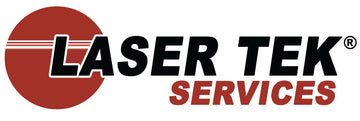The desire of printer manufacturers to provide users with enhanced quality and long-lasting prints has taken a toll in the efforts to raise paper-recycling levels. As ink technology gets better, the deinking processes used in paper recycling plants has stayed dormant over the years. As of writing, no emerging technology has surfaced to efficiently remove ink from post-consumer paper which compromises recovery levels. Of particular concern are printouts turned out by laser printer toner cartridges that systematically defy deinking processes; rendering current technology obsolete and less effective.
What deinking process is used for paper recycling?
Under a typical deinking process, post-consumer paper is soaked in vats of water. As paper swells, soap is added to the slurry to loosen ink. Air bubbles are introduced thereafter, which forces loose ink to float and rise to the surface where it is removed via a method called froth flotation. The process is simple, but when ink refuses to float and mix with air bubbles, deinking cannot be completed. This results to a darkened paper that is too spotted and therefore not recommendable for newspaper printing, as any printed text on it will be hard to decipher or read.
Recycle. Reuse. Reduce! You can never do wrong with a regular dose of cool recycling ideas for all that junk.
What makes the deinking process difficult?
Modern day digital printing inks, particularly laser toner in cartridges, are technically formulated to deliver the best in print quality. However, these are not friendly to typical deinking processes. These types of inks are water soluble but extracting it from the slurry of used paper can be tedious because it distributes all throughout and do not percolate to the surface. This therefore taints the vat mixture. Once the fibers become too dark, it can no longer be used as additive to paper recycling and must be thrown away as total waste.
What needs to be done to continue with the paper recycling initiative?
Retooling current deinking facilities to be more receptive to advances in technology cannot be done overnight. Instead, printer manufacturers must implement a turn around and deliver an ink and toner formulation that is more in cadence to current deinking practices. This is an observation that is indeed doable, considering the contribution of paper recycling to the upkeep of the environment. Printer manufacturers are already aware of the problems and are doing research in laboratories to deliver a viable solution to the deinking draw down.
Are you spending so much money on printing supplies? Save as much as 50% when you switch to compatible toner cartridges.
Remember that paper recycling faces a new and formidable challenge, so start by picking the right printer toner cartridge to further fuel the initiative and make your prints more-friendly to current deinking practices.





